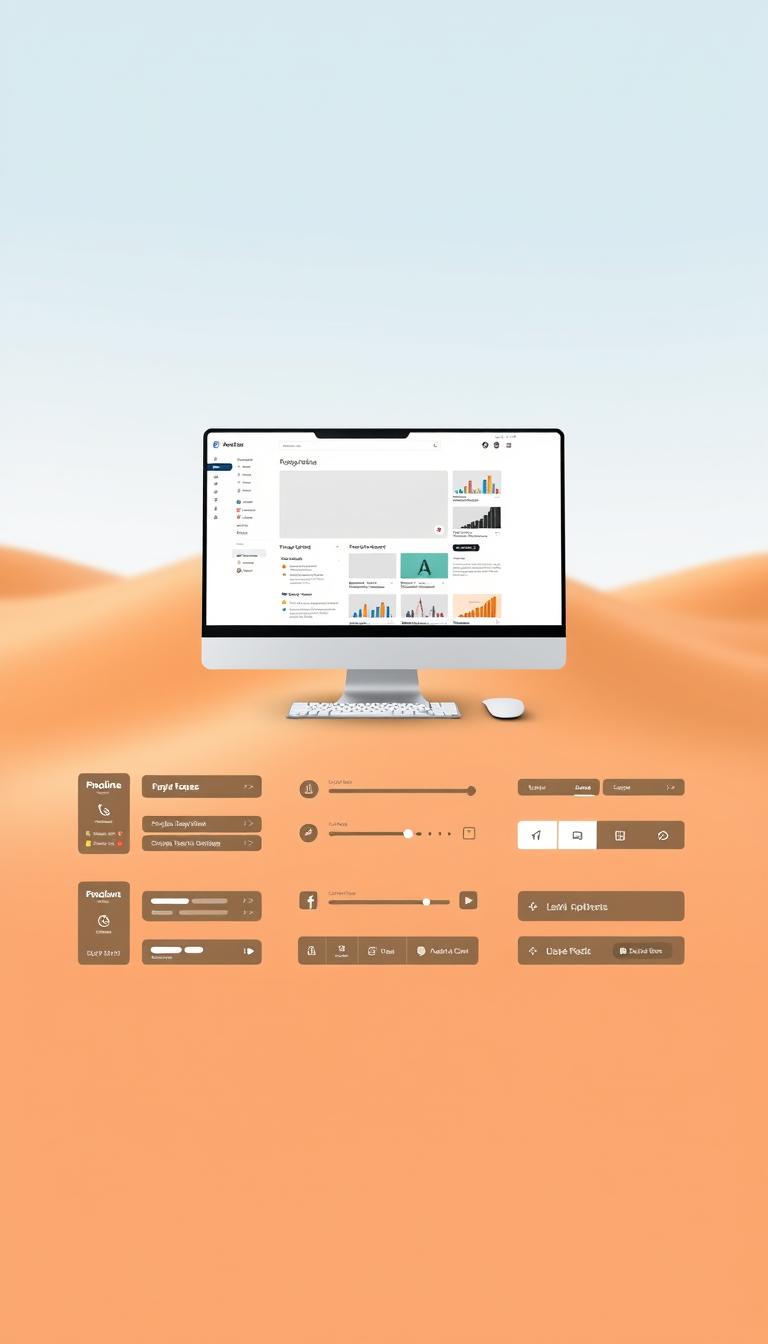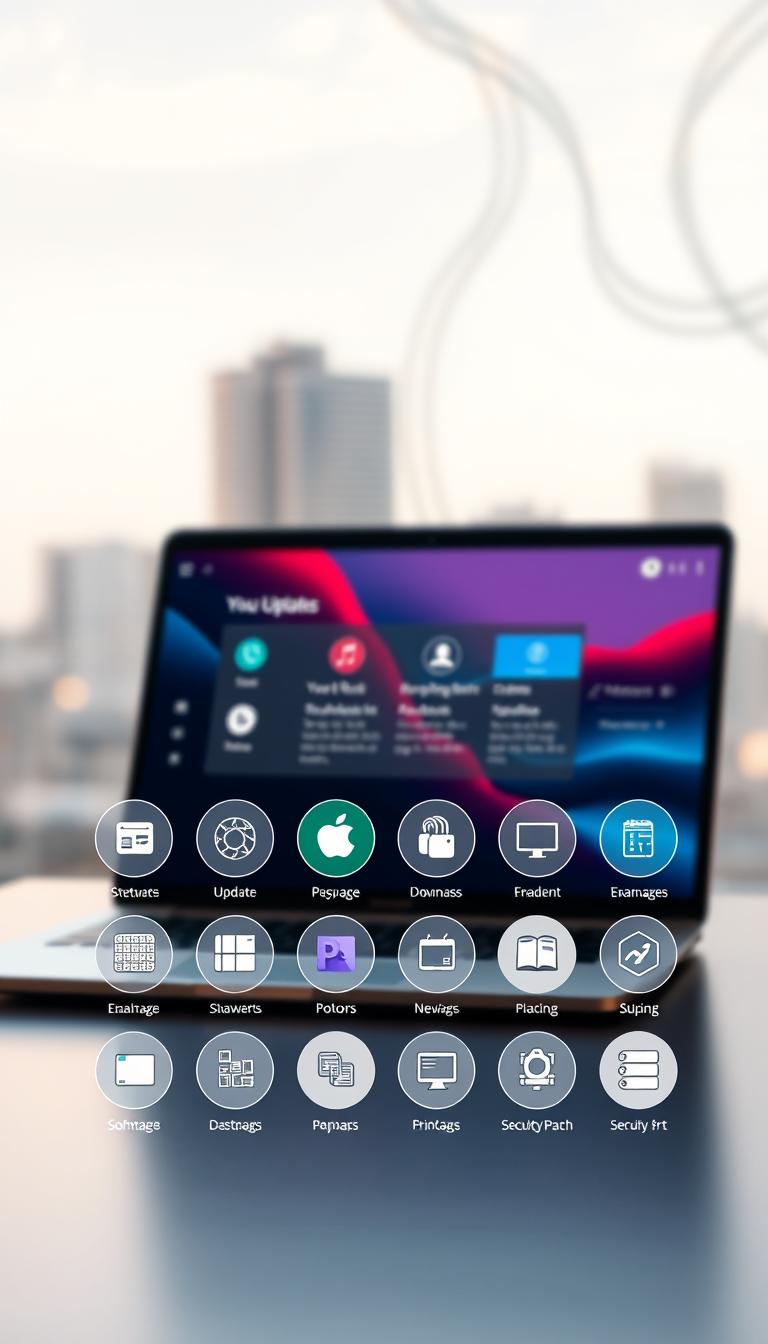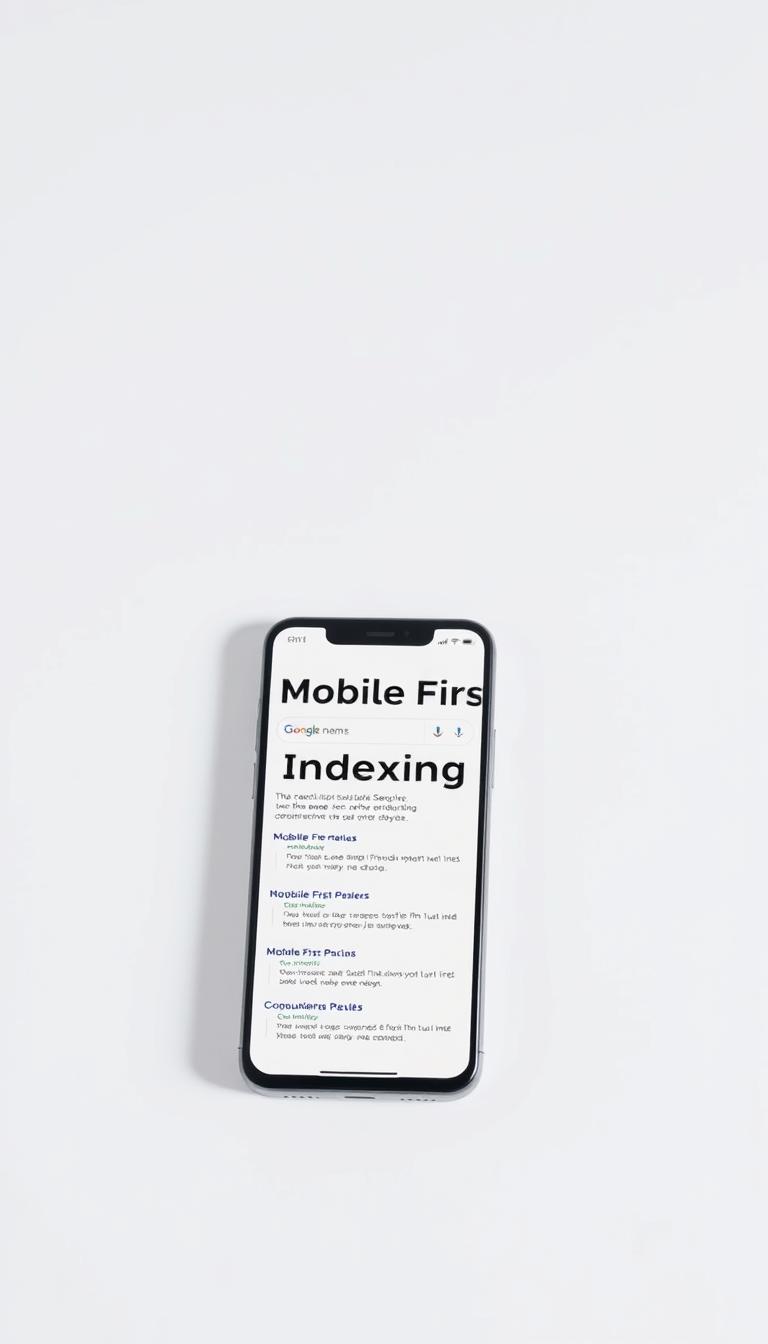
Keeping up with Google’s algorithm updates is key in the world of search engine optimization. Most people now use mobile devices to access websites. So, making your site mobile-friendly is a must. Google now focuses on the mobile version of your site first when ranking.
Google says it mainly uses the mobile version of your site for indexing and ranking. This means your site needs to be not just mobile-friendly but also optimized for search engines. By making these changes, you can get more visibility and rank higher on Google.
Key Takeaways
- Google’s mobile-first indexing prioritizes mobile content for indexing and ranking.
- Optimizing your website for mobile is crucial for search engine rankings.
- Adapting to mobile-first indexing can improve your website’s visibility.
- A mobile-friendly website is essential for a good user experience.
- Staying ahead of Google’s algorithm updates is vital for SEO success.
Understanding Mobile-First Indexing
Google has changed how it ranks websites to favor mobile users. This big change affects how websites are seen and ranked. Now, knowing about mobile-first indexing is key for website owners and marketers to stay visible on Google.
What is Mobile-First Indexing?
Mobile-first indexing means Google looks at the mobile version of a website first. This is a big change from when the desktop version was more important. Now, since most people use mobile devices, Google’s update matches how we use the internet.
In 2021, 55.68% of internet searches came from mobile devices, as Statista found. This shows how crucial mobile-friendly websites are. Google’s mobile-first indexing makes sure the content most users see is what gets ranked.
Why Google Made the Switch
Google switched to mobile-first indexing because of more mobile traffic. As more people use mobile devices, Google wants to give better search results. By focusing on mobile versions, Google can better understand and rank content for most users.
This change also makes website owners focus on making both mobile and desktop versions great. It encourages responsive design and mobile-friendly content. This helps users on all devices.
The Importance of Mobile Optimization
Google now focuses more on mobile-first indexing. This means mobile optimization is key. Most people use their phones to surf the web. So, making sure your site works well on mobile is essential for any online business.
User Experience on Mobile Devices
A mobile-friendly design is more than just fitting on small screens. It’s about giving users a great experience. This encourages them to stay and do more on your site.
A Pew Research Center study showed 76% of US adults like buying things online with their phones. This shows how important it is for websites to work well on mobile.
If a site isn’t mobile-friendly, users face problems. They might see slow loading, bad layouts, and hard-to-use navigation. This can make them leave quickly, hurting your site’s performance.
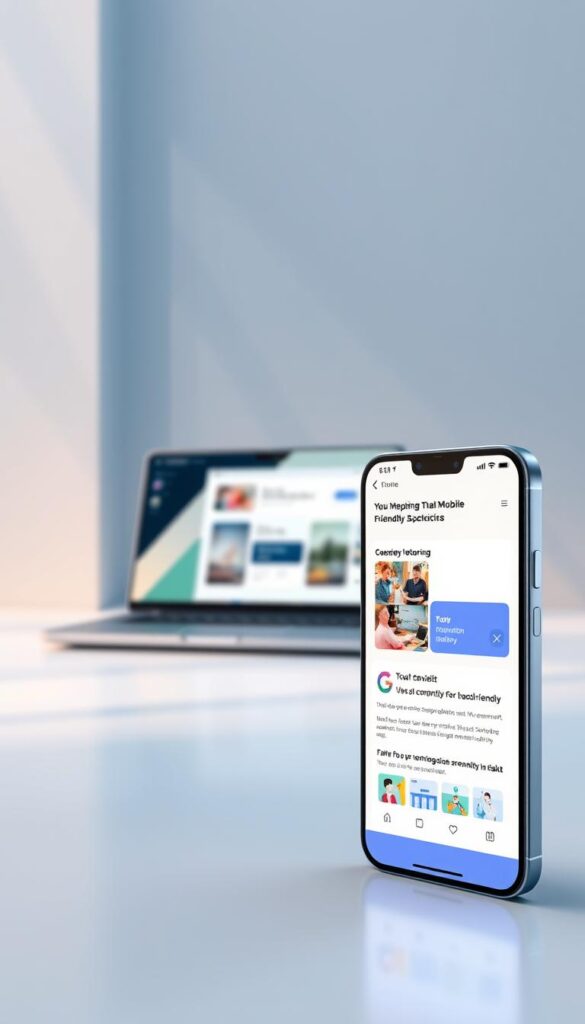
Statistics on Mobile Usage
Mobile usage stats are eye-opening. Most people use their phones to get online. This makes mobile optimization a must, not just a nice-to-have.
By focusing on mobile, businesses can make their sites better. This leads to more people staying on your site and finding what they need. It also helps your site rank better in mobile searches.
- Mobile devices are a big part of global internet use.
- More people are choosing to shop on their phones.
- Not being mobile-friendly can cost you visitors and sales.
By making your site mobile-friendly, you can stay ahead. This is key for success online today. As we keep learning about mobile optimization, it’s clear it’s vital for your site’s success.
Key Differences Between Mobile and Desktop Indexing
Mobile-first indexing means Google looks at the mobile version of a website first. This big change affects how websites are crawled, indexed, and ranked. Knowing these differences is key for better website performance.

⭐️ Tap the exclusive deal link https://temu.to/k/uot8tcxvwum to score top-quality items at ultra-low prices. 🛍️ These unbeatable deals are only available here. Shop now and save big! ⭐️ Directly get exclusive deal in Temu app here: https://app.temu.com/m/mhb5rstagbx
Another surprise for you! Click https://temu.to/k/uag0bn0o0wd to earn with me together🤝!
Crawling and Indexing Variations
Google’s crawlers now focus more on the mobile version of websites. This makes the content and structure of the mobile site very important. If a site has different content on mobile and desktop, the mobile version is what gets indexed.
Responsive design makes it easier for Google to crawl and index a site. It uses the same HTML for both desktop and mobile but styles it differently. Separate mobile sites, on the other hand, can be more complex for Google to handle.
Ranking Factors Unique to Mobile
Mobile-first indexing highlights some key ranking factors for mobile devices. Page speed is a big one, as mobile users expect quick and smooth experiences. Google’s algorithms consider mobile page speed when ranking sites, making fast mobile versions crucial.
Mobile usability is another important factor. This includes things like font sizes and tap targets on smaller screens. Sites not optimized for mobile may see lower rankings.
Voice search on mobile devices has also become a ranking factor. With more voice searches, sites optimized for natural language queries do better in mobile search results.
Assessing Your Current Mobile Performance
Checking how your site works on mobile is key to doing well in mobile searches. Google now focuses more on mobile sites. So, knowing how your site does on mobile is very important.
To check your mobile site, you need the right tools. Google Search Console is a great tool. It shows how your site does on mobile, including traffic and how users interact with it.
Tools to Measure Mobile Performance
There are many tools to check your mobile site. Some top ones are:
- Google Search Console: Gives insights into mobile search traffic and more.
- Google Analytics: Tracks mobile traffic and how users act on your site.
- PageSpeed Insights: Checks how fast your site loads on mobile and suggests ways to get faster.
With these tools, you can really understand how your site does on mobile. You can also find out what needs to get better.
Identifying Common Pitfalls
When checking your mobile site, watch out for common problems. These include:
| Pitfall | Description | Impact on Mobile Performance |
|---|---|---|
| Slow Loading Speed | Pages taking too long to load on mobile devices. | High bounce rates and lower search rankings. |
| Non-Responsive Design | Website design not adapting to different screen sizes. | Poor user experience and higher abandonment rates. |
| Unplayable Content | Content not optimized for mobile devices, such as unplayable videos. | Frustrated users and negative impact on engagement. |
By fixing these common problems, you can make your site better on mobile. This will help your site rank better in mobile searches.

Improving your website’s mobile performance is not just about fixing issues; it’s about creating a seamless and engaging experience for your mobile users. By using the right tools and fixing common problems, you can make your site more usable and visible on mobile devices.
Creating a Mobile-Friendly Website
Google now focuses on mobile sites first. This means having a website that works well on phones is key. Most people use their phones to browse the internet.
Responsive Design vs. Separate Mobile Site
There are two main ways to make a website mobile-friendly: responsive design and separate mobile sites. Responsive web design is Google’s top choice. It makes a website change its layout to fit any screen size.
A separate mobile site is another option. It’s a special version of your website for phones, on a subdomain. But, it needs more work to keep it up to date.
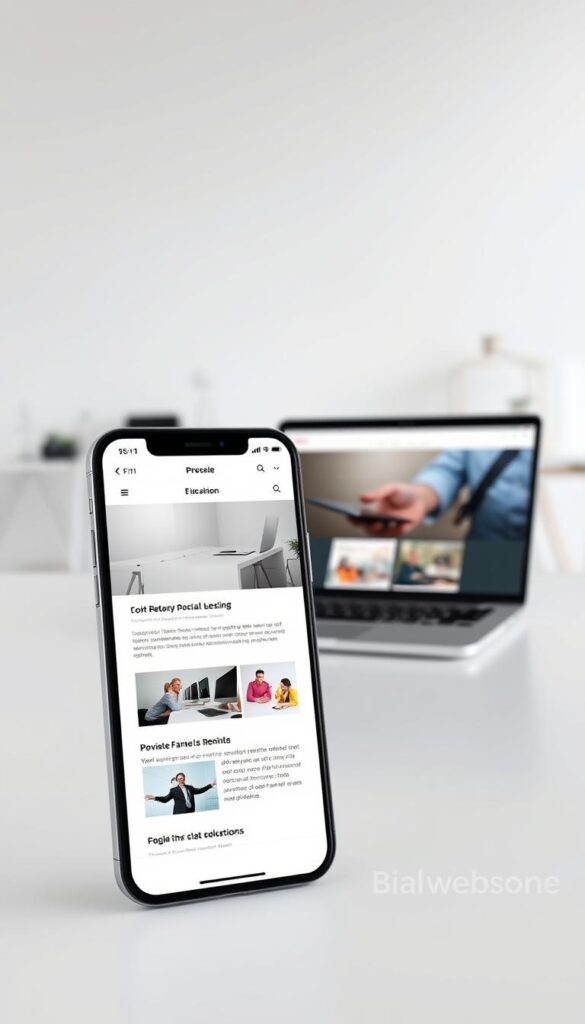
Best Practices for Mobile Design
To make your website great on phones, follow these tips:
- Simplify navigation: Make your site easy to navigate on small screens.
- Optimize content: Focus on content that’s easy to read on phones.
- Use mobile-friendly elements: Design buttons and forms for phone users.
Google suggests a few things to make your site better for mobile users. Make sure content is easy to read without zooming. Tap targets should be big and spaced well. And, your site should load fast.
| Design Element | Best Practice | Benefit |
|---|---|---|
| Navigation | Simplify and make intuitive | Enhanced user experience |
| Content | Prioritize and optimize for mobile | Better engagement |
| Loading Speed | Optimize images and minify code | Faster load times |
By choosing responsive web design and following mobile design tips, we can make our sites better for phone users. This helps our site rank higher on Google’s mobile-first index.
Content Considerations for Mobile Indexing
Exploring mobile-first indexing, we see how our content is viewed on mobiles. Since most of Google’s indexing is now mobile-first, making our content mobile-friendly is key.
Prioritizing Mobile-Friendly Content
To make content mobile-friendly, we need to know what works on mobiles. We should create content that is concise, easy to read, and fits well on small screens.
Optimizing Images and Multimedia
Google suggests making images and multimedia mobile-optimized. This means images should be compressed for quick loading. Videos and other multimedia should play smoothly on mobiles without lag.

| Content Type | Mobile Optimization Considerations | Benefits |
|---|---|---|
| Text Content | Ensure concise and easily readable on smaller screens | Improved user experience, better engagement |
| Images | Compress images to reduce load times | Faster page loads, improved SEO |
| Multimedia (Videos, etc.) | Ensure easy playback on mobile devices without excessive buffering | Enhanced user experience, increased engagement |
By focusing on mobile-friendly content and optimizing images and multimedia, we boost our site’s mobile performance. This leads to better rankings and a better user experience.
Local SEO and Mobile-First Indexing
Most local searches happen on mobile devices now. This makes local SEO a must for businesses. It’s key to know how mobile-first indexing affects local SEO and how to boost visibility in search results.
The Connection Between Mobile Use and Local Searches
Google says mobiles are used for local searches a lot. People look for businesses, services, and products nearby. Having a mobile-friendly website that’s good for local SEO is vital. A good website improves user experience and search rankings.
Mobile local searches often mean users want to buy or visit. Businesses need to make sure their online presence meets mobile users’ needs. This means having accurate Google My Business listings, quick review responses, and easy-to-use websites on smaller screens.
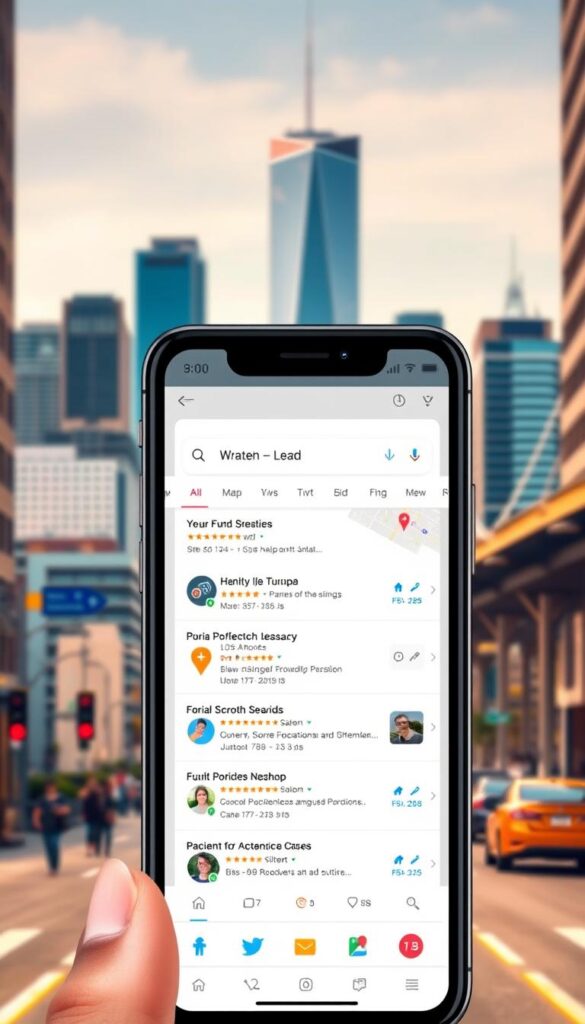
Strategies for Local Businesses
Local businesses can improve their online presence with several strategies. Here are a few:
- Claim and optimize their Google My Business listing
- Keep their name, address, and phone number (NAP) the same everywhere
- Create content that matters to their local audience
- Get quality citations from local directories and websites
Here are some important stats about local SEO for mobile users:
| Statistic | Description | Percentage/Number |
|---|---|---|
| Mobile Local Searches | Percentage of mobile users who conduct local searches | 76% |
| Intent to Purchase | Percentage of mobile users who visit a store within a day of searching | 61% |
| Local Search Visibility | Percentage of local businesses that appear in search results | 46% |
Understanding mobile and local searches is key. By using good local SEO strategies, businesses can get more visibility, foot traffic, and sales. As mobile-first indexing evolves, staying on top of local SEO is crucial for success in local markets.
Testing Your Site for Mobile Compatibility
Google now focuses more on mobile-first indexing. This means it’s key to check if your site works well on mobile devices. A good mobile experience keeps visitors coming back and boosts your search rankings.
Tools and Resources for Mobile Testing
Google Search Console is a great tool for checking how your site performs on mobile. It shows you any mobile usability problems. This helps you fix issues that might hurt your site’s mobile friendliness.
Other tools like Google’s Mobile-Friendly Test and PageSpeed Insights are also useful. They help you see if your site is mobile-friendly and suggest ways to make it better.
Understanding Mobile Usability Reports
Mobile usability reports are important for seeing how users interact with your site on mobile. They point out slow loading times, design issues, and hard navigation. These problems can make users leave your site quickly.
| Issue | Description | Impact |
|---|---|---|
| Slow Loading Times | Pages taking more than 3 seconds to load | High Bounce Rates |
| Non-Responsive Elements | Elements not adapting to screen size | Poor User Experience |
“As the world becomes increasingly mobile, the importance of page speed will only continue to grow.”

Staying Updated with Google’s Mobile-First Guidelines
To keep your website visible and competitive, it’s key to follow Google’s mobile-first indexing rules. As SEO changes, keeping up with Google’s mobile-first indexing is crucial for better rankings.
Where to Find Official Google Resources
Google has many official resources for webmasters and SEO experts. The main places are Google’s blog and the Google Search Console Help pages. Google’s Webmaster Guidelines also offer great tips for mobile-friendly sites.
Tools like Google Search Console help us check how our site works on mobile. Google’s YouTube channel has videos and tutorials on mobile-first indexing.
Recent Updates to Consider
Google often updates its rules to better serve users and keep up with new tech. Lately, updates have focused on making mobile use better and improving page experience. Page Experience is now a big factor in rankings, showing how important a smooth mobile experience is.
Recent changes include better handling of mobile-friendly content, the effect of page speed on rankings, and how intrusive interstitials affect user experience. Keeping up with these updates is essential for our SEO plans.

| Aspect | Description | Impact |
|---|---|---|
| Mobile-Friendly Content | Content that is easily accessible and readable on mobile devices. | Improves user experience and search engine rankings. |
| Page Speed | The time it takes for a webpage to load on mobile devices. | Faster page speeds enhance user experience and are favored by Google’s algorithms. |
| Intrusive Interstitials | Pop-ups or overlays that obstruct the main content on mobile devices. | Can negatively impact user experience and search engine rankings if not implemented carefully. |
Future Trends in Mobile-First Indexing
Looking ahead, mobile-first indexing will keep evolving. New tech, like voice search, is already changing mobile search ranking. We need to keep up to make sure our sites stay visible and easy to use.
Voice Search and Beyond
Voice search is changing how we use our phones. To get better at voice search, we should use natural language and long-tail keywords. This also shows how key user experience optimization is, as people want quick and accurate answers.
Adapting to Changing User Behavior
Mobile devices are now a big part of our lives. This means more mobile shopping and local searches. To make the most of this, we must focus on website usability and local SEO.
By keeping up with mobile-first indexing trends and adjusting our plans, we can stay ahead. This will help us improve our online presence.
